Heute habe ich mein iPhone 15 Pro komplett zurückgesetzt, und zwar aus mindestens drei Gründen:
Category: mobile phones
Der Brck im Test
Mein alter Schul- und Bloggerfreund Cedric Weber hat sich in den letzten Weihnachtsferien seinen Brck in der Brck-Zentrale in Nairobi (Kenia) abgeholt. Und ich darf den jetzt endlich testen. Yay!
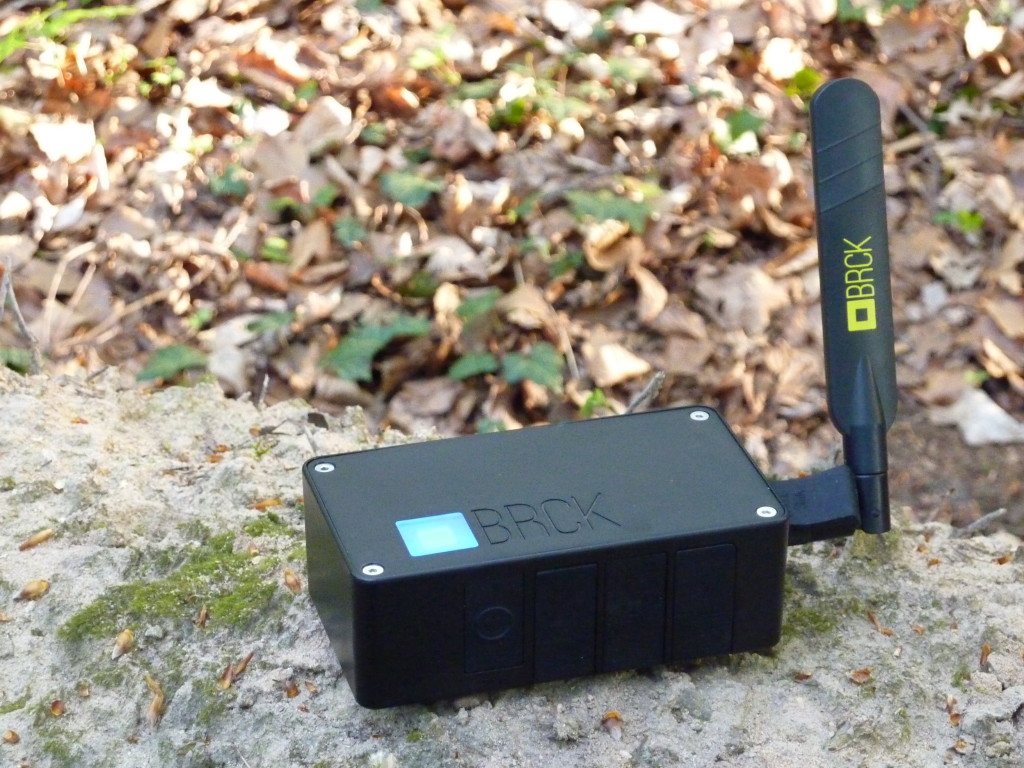
Overlay SIM für mobile Bankgeschäfte
Während wir in Deutschland auf die ultimative Lösung bei mobilen Bezahlsystemen warten und immer wieder die Datensicherheit in Frage stellen, macht man sich in anderen Ländern diesbezüglich weniger Sorgen. Sorgen um die Manipulierbarkeit eines ohnehin schon wackeligen Mobilfunksystems, dessen Sicherheit für eine größere Kundenzufriedenheit und niedrigere Gebühren bereitwillig geopfert wird. Bedenken gibt es da höchstens seitens der Politik, die hier gierig die Hand auf hält und eine Einnahmequelle sieht.
fake 12W Apple A1401 charger
I recently bought a 12W charger for my iPad mini which was said to be an “Original Apple” product. Being the nerd I am, I had to take a closer look on this item upon arrival and quickly realized that it is well made, but unfortunately FAKE charger. Well made, as it comes with a nice print and metal connector.
After posting this on Instagram and adding some notes, I realized that I should instead turn this into a blogpost as it may be useful to someone out there:
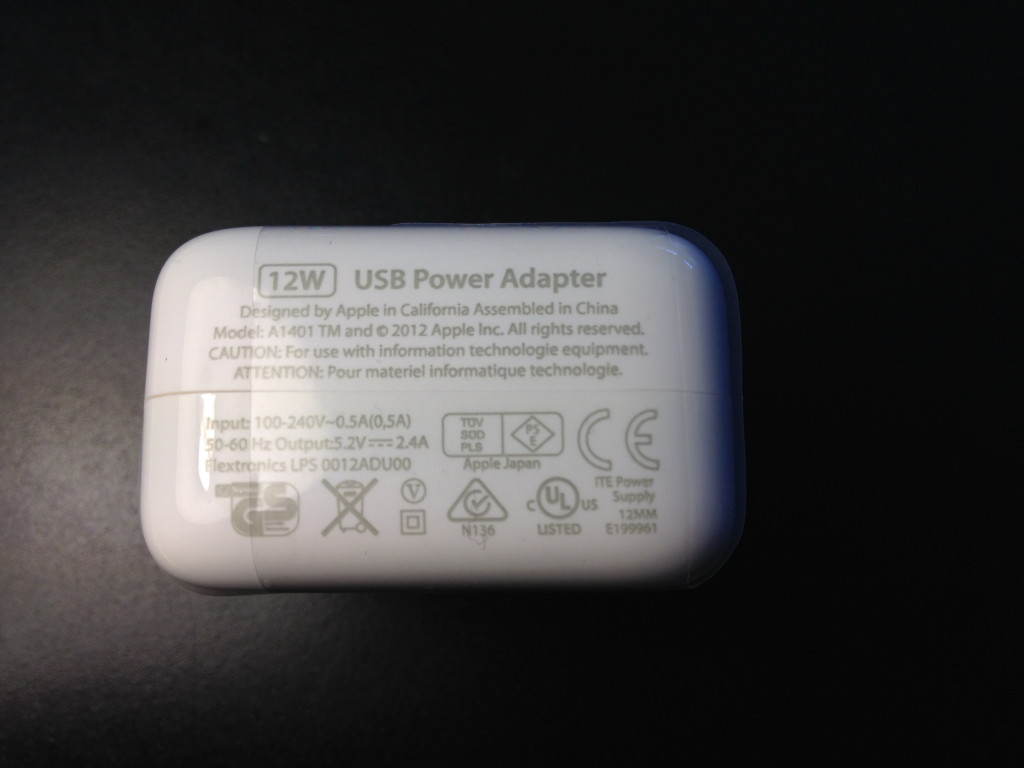
- The font is a bit too bold.
- Apple nerds will notice the even spacing between “Designed by Apple in California” and “Assembled in China” as well as between “A1401” and “TM and ©” and “2012 Apple Inc.”.
- “For use with information technologie equipment.” (technology)
- “materiel” instead of “matériel”
- The (measured) output is just 5V/0.8A.
- The plastics have a very similar glossiness to the original, but you will still note some bad quality issues here and there. Like the cover on the USB port as pictured below or the uneven gaps between the two plastic covers.
- There is a serial number inside the USB port, but the port itself is of low quality (the plastic tongue inside is poorly shaped).

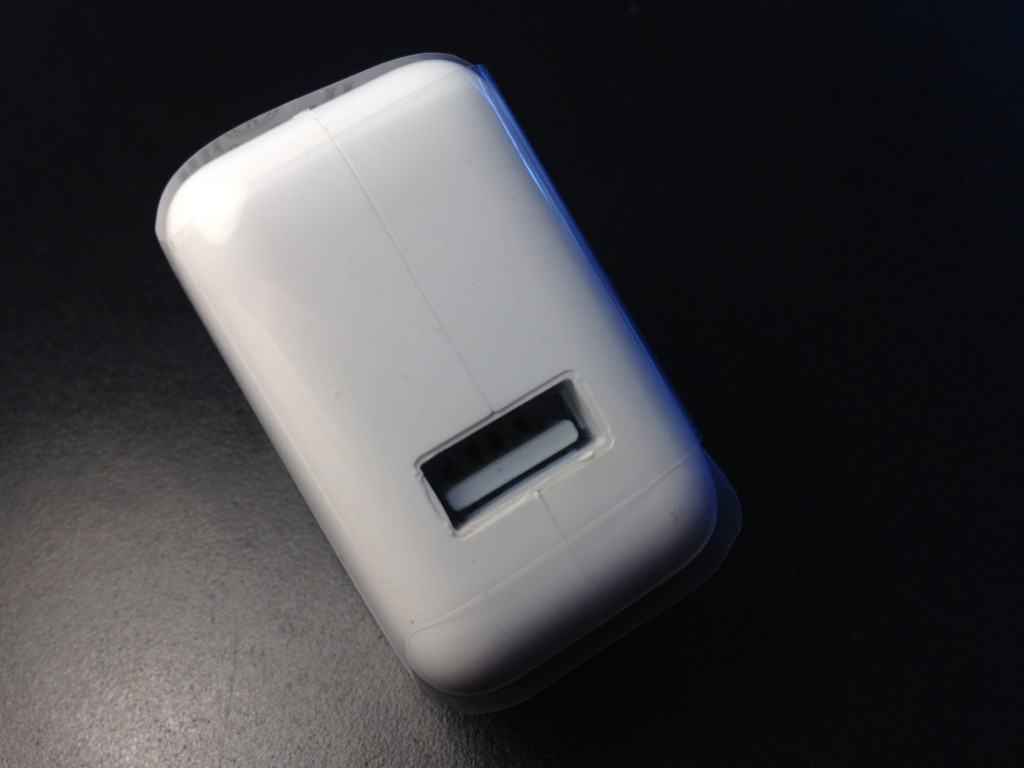
As someone who used to sell polyethylene (PE) and polypropylene (PP) for a French mineral oil company some years ago, the plastics often are the biggest hints why something is of lower quality and probably fake. For a device that can not be opened and thus requires the user’s trust (that the inside PCB / circuit is of higher quality), the external appearance often is the only criterion we can rely on.
And as someone on Instagram also noted: the only method of buying chargers these days is going for 2nd hand gear that is proven to be original. THIS very auction, however, was one of those “let me buy a used item via eBay to make sure it’s original”-approaches, but which also failed.
Twitter hilft!
Letztens wollte ich mein über zwei Jahre altes Nokia 1800 Prepaid Handy von seinem O2-Netlock befreien und rief dazu die Hotline von O2 an, wo mir zuerst ein falscher Code genannt und dann vorenthalten wurde, dass man den Freischaltungscode nur maximal 10x eingeben dürfe. Am Ende der ca. 30 Minuten dauernden Prozedur hatte ich dann ein dauerhaft gesperrtes Nokia Handy, das fortan nur noch im O2-Netz verwendet werden kann.

Mchimba kisima hungia mwenyewe*
Going by how much iOS4 slowed down the iPhone 2G and 3G, I am still undecided whether I should update iOS 5.1.1 on my iPhone4 to iOS6. I did update the iPad2, though. Just out of curiosity (of course, everyone does it for this reason) and to convince myself of the following situation:


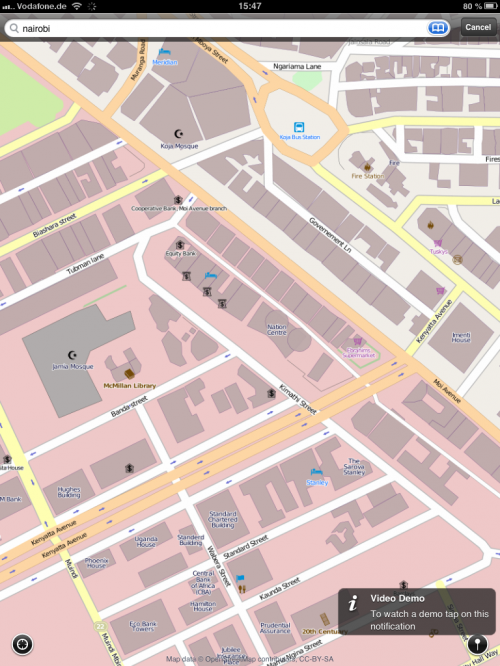
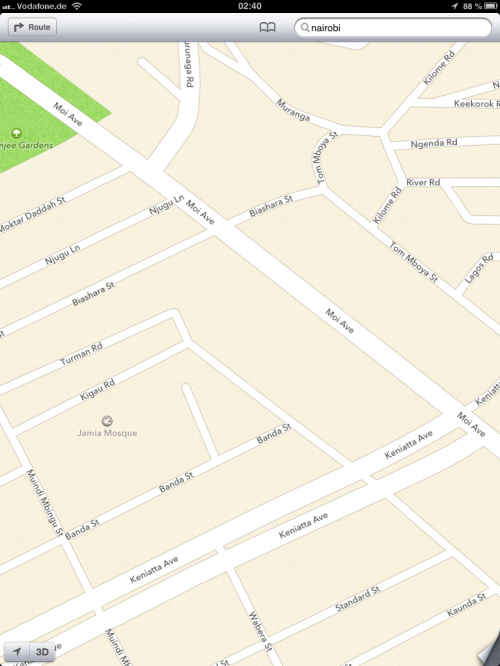
Maps are important. You may have a choice of what is to run in a native map app or within the browser, but many apps actually make use of the map system. So chances are that your favourite app will also be forced to use Apple maps.
I also just couldn’t update all apps at once on my iPad2 16GB – because there’s ONLY 2.6GB left. With GarageBand taking up 1.1GB alone, iOS6 refused to update. Now, after manually updating GarageBand, it’s reduced from 1.1 GB to 734 MB. I hope that Apple removed Retina graphics for those devices that don’t come with Retina displays (like my iPad2). In any case, many Apple apps are horrible memory hogs – and it seems that no one really cares about it, which imo is the worst part.
Atm, I don’t really see a benefit in updating iOS 5.1.1 to iOS6 on the iPhone4 (not4S) except for some minor improvements. I may change my mind on this, but would only do it if it really improves performance of the phone. And you?
* Mchimba kisima hungia mwenyewe = He who digs a pit will fall into it himself.
AOB: the first iFixit teardown
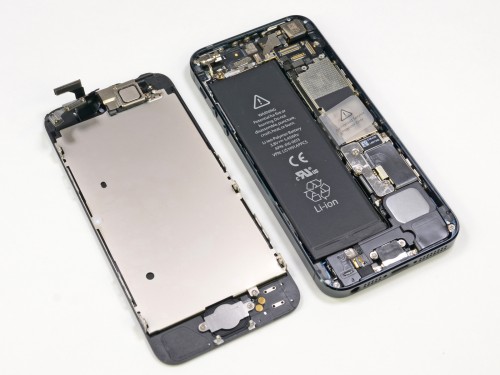
The first iFixit teardown of the iPhone5 comes with a least two good messages: a) the iPhone5 is opened front-to-back and b) the home button appears to be easily replacable. That’s extremely good news, imo. Not so nice is the excessive amount of glue underneath the lightning connector cable – which also tells me that it may be prone to damage. Huh, “Scuff Gate“? Apple fanboyz and their luxury problems.
microSD cards should contain ALL user data
Here’s an idea that has been haunting me for years now, and I am most certainly not the only person who has the following concept in mind: using microSD cards in mobile phones for ALL user data.
ALL user data = everything I enter into the phone. The address book, multimedia files, user defined settings.
Buy an iPhone, install everything, have it drop to the floor or into the toilet, resulting in a water damage and the phone won’t be recognized by iTunes – well, even your most recent backup on the cloud will only be as good as when you last made a backup. No microSD cards on iPhones.
Many Android phones already come with slots for microSD cards. Plug it in, roll out your backup via the internal backup routine, via Titanium or Google, and you’re done. It’s not 100% the way I want it, but it’s getting much closer than what you have on an iPhone.
Sure, there’s the cloud, some will argue. But a lot of users out there still are on a slow internet connection (if any) and many also don’t want to have their data saved in the cloud.
“Without a microSD card”, I was once told, “there’s less to worry about. And from a business perspective, it’s also more secure”. Well, is this a valid argument?
There’s an older essay on microSD cards in phones by (mobile phone expert and analyst) Eldar Murtazin, where he argues that microSD cards aren’t the better option – but I couldn’t disagree more. Of course, as an analyst he also looks at why phone manufacturers have used memory cards on phones instead of internal memory and the cheaper price may be a reason for their introduction on phones some years ago. He also looks at figures from the actual use and says that many don’t actually use the microSD card or what it is capable of.
Well, for a reason, I’d say. It’s because the current setup where I can only use it for storing multimedia files and apps is really insufficient. My ideal phone is a dumb phone with strong CPU power, some connectivity extras and a smart OS – and where ALL user data is stored on a microSD card on different levels (i.e.):
- Level 1: apps
- Level 2: app settings, address book, desktop settings, bookmarks
- Level 3: static multimedia files (e.g. photos, videos, audio files, documents, etc.)
- Level 4: swap / cache memory
The phone is dead? Just pull out the microSD card, plug it into a new phone and you are ready to go. So, obviously, there would need to be a standard on this to provide an interaction between different phones that come with the same OS (the requirements already sound a lot like the Titanium backup suite on Android). And the beautiful part about this setup would be that all stored user data is up to date – and not as of three days ago when the phone did a backup of some static data to the cloud.
How many of you have actually lost some important numbers with broken phones? How many have only recently realized that the numbers stored on a mobile device are also backed up online? How many are using SyncML services like Everdroid?
Phones die or “walk away”. Hardware can be replaced, software in terms of your own user data can’t and is the most precious asset of the 21st century in IT. So how come there are microSD cards on phones that are only used in a very restricted way?
(I also love my iPhone, but the current version of iCloud is some crippled piece of shit, just like iTunes).
Five reasons why the Motorola Defy sucks (not really)
Yes, I know – five blog posts about a phone within two weeks may be too much for most readers, but some people have asked me how I like my new mobile phone – the Motorola DEFY – so I went on and compiled a review on it. In German, for Amazon.de.
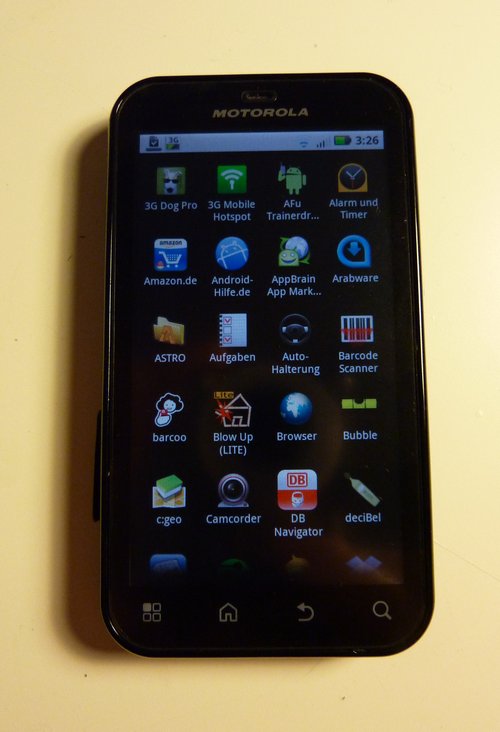
Don’t speak German? Then read on….
The part where you’ll lose your readers is probably where you start talking about how good product xyz is. There are 163 reviews on Amazon.de about this particular phone at the moment, and almost all reviews describe how great this phone is. So I went on and tried to focus on the disadvantages of the Motorola Defy – which I think are important facts when you’re about to invest some money in a new phone.
It’s an incomplete list, things (especially some software issues) are subject to change, we’re talking about a Motorola Defy in mid February 2011. Also, I started as an Android n00b (when I got this phone a week ago).
1. The micro-USB port is at the side of the devices, so you’ll have troubles finding a suitable docking station. I’ve built my own, but the device still acts up when inserted into the docking station, even with the latest (unofficial) software. Plus the port is covered by a piece of plastics which needs to be removed (and is fixed to the body of the phone) – thus: a docking station will always have to provide enough room for this flap. It’s still better than the flaps on the Nokia phones I’ve reviewed in the past and of course helps protect the phone from water and dust.
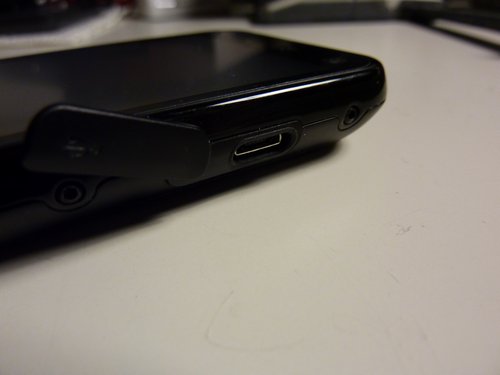
2. There’s no specialised accessory available as of yet except for the usual suspects such as car chargers, (passive) car mounts, display and body covers. No docking station, no headphones, no spare parts. And this although the phone has sold quite well over the last few months. Where are all these Chinese manufacturers when you need them? Or could this be related to the nasty docking station issue I’ve experienced on my Defy (phone switches into flight mode, starts media player)? Or is that just a “media dock”-mode? Hmm.

Moto DEFY car mount menu (very nice!)
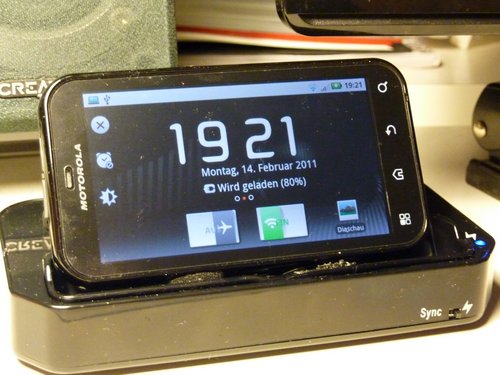
Moto DEFY media dock menu (before it started acting up…?!).
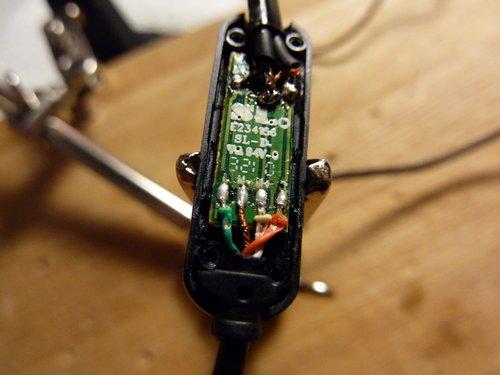
opened Motorola DEFY headset (hint: iPhone headsets do work)
tip = L // 2nd ring = R // 3rd ring = M- // sleeve = M+
3. The ear speaker problem a lot of (not all, but many) Moto Defys came with is due to low quality speakers and should have been avoided by quality management. Especially since the rest of the phone is top-notch Motorola quality. The Sony K770 (mobile phone) is said to be a resource for alternative speakers….
4. The camera. I believe that the camera module inside the phone is capable of doing much more than what we see as end results. The picture quality is far away from the likes of Nokia N95, N82 or even N8 (it’s just a simple 5mpx module after all) and when I installed new firmware on the phone, I realized how much better this camera can be. Really, an upgrade of the camera software should be recommended to Motorola.


How about these two totally unrelated macro sample shots? (taken with the phone on Android 2.2)
5. Motorola currently ships this phone with Android 2.1. I am using a retail version which means any upgrade of the internal firmware isn’t possible over-the-air (OTA), but instead only via a Motorola software on my computer. So I upgraded it from version 2.2.1 to 2.5.1 (both within Android 2.1) and still had some nasty bugs on it like folder names that disappeared after rebooting the phone, or missing lock screens after pressing the main button. Also, I wasn’t using Motorola’s own Android skin “Motoblur”, so I can’t remark on that one. Anyways, after experiencing all these bugs, I decided to flash it with a leaked BLURless ROM from Orange Poland (!) to Android 2.2. What you actually do is a full wipe of all user data on the phone, install the new ROM, do another full wipe and remove some Orange default settings. It’s an automated process that will certainly kill any warranty on the phone, so you should only do it if you know what to do. I didn’t, but I tried it nevertheless and was really surprised:
Motorola Defy + Android 2.2 – Motoblur = AWESOME!
Don’t get me wrong, this preliminary BETA via Orange Poland still has some bugs, but Motorola would be well advised to change their policy on this Motoblur thing and have it removed, or only make it available upon request. Or keep it for business customers who need a closed environment. Not because Motoblur is bad – it isn’t – but because the development and adjustment of Motoblur slows down the entire process for future Android releases on the phone. Seriously, you can not ship a brand new phone (released to the market in Nov. 2010) with Android 2.1 while the competition already has 2.3 and while I can get 2.2 on any cheaper 100€ Android device (ZTE, Huawei, etc.).
Else, I think the Motorola Defy is a great phone and is unique enough to remain on the market (even with Android 2.1!) for a very long time.
Another detail I eventually also realized: you’ll need to register a credit card with Google to buy software on their Android market. On Apple iTunes, there are vouchers available for purchase in our local supermarket. So it’s not only the great UI, simplicity of the iPhone or good apps that made the Apple iPhone dominate the market, but also this ecosystem called iTunes (compared to other like Android market) that contributed to the success of the iPhone. You’ll read about such things and think: “yeah, of course…”, but then when you are charged extra fees on your CC because it was used on Google checkout (US <=> Germany), you’ll quickly understand that some things are smarter with iTunes for a very good reason. This, however, isn’t related to the phone, but to all Android devices.
So…. does the Motorola Defy suck? – NO, of course not.

